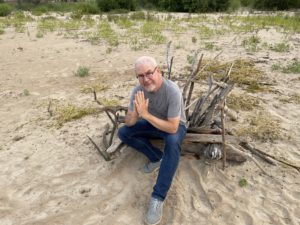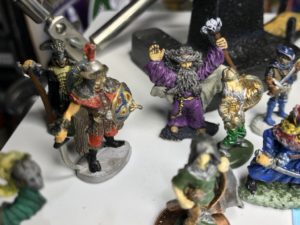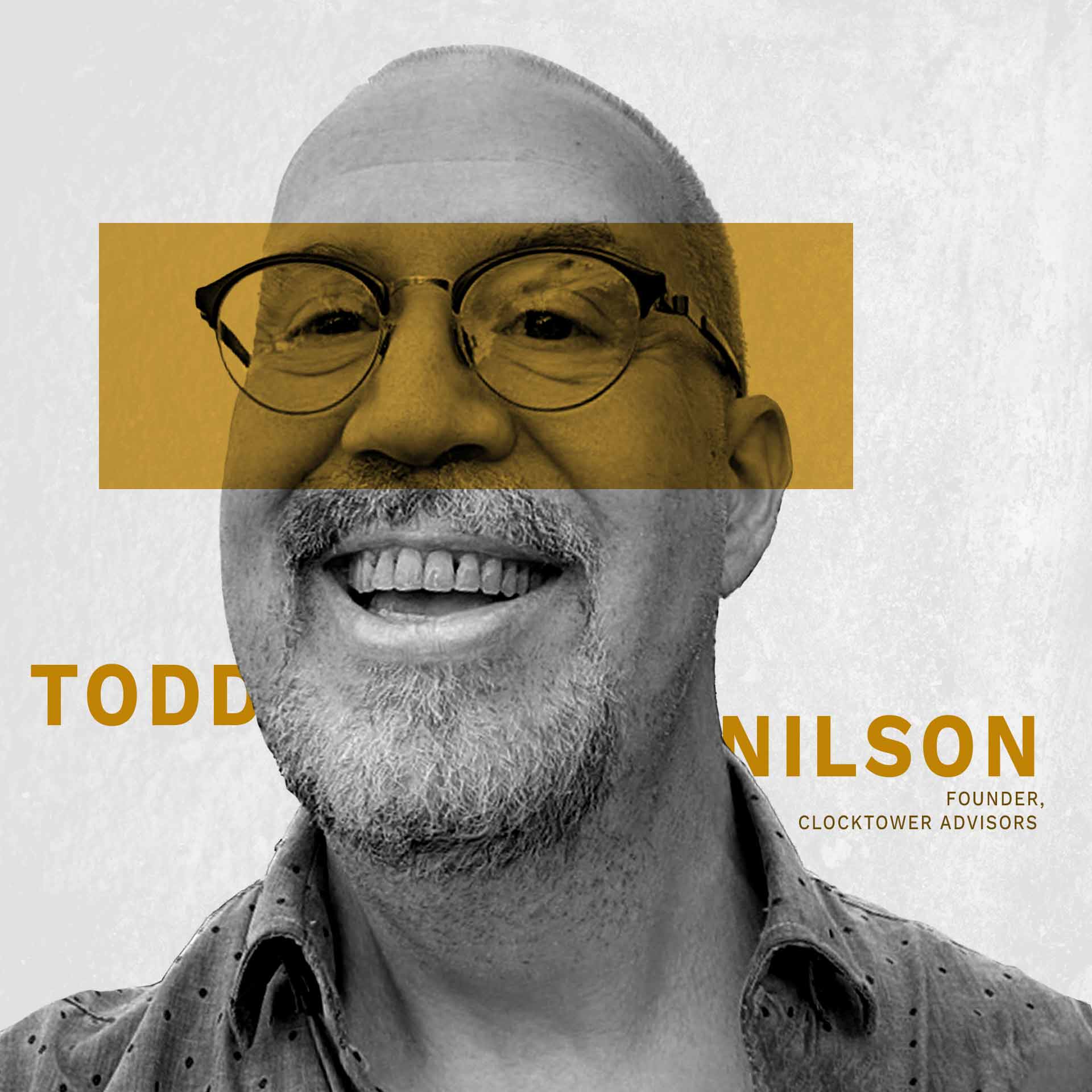CATEGORIES
Inclusion and Impact | People We Admire | TechnologyOverview:
- From an early age, Todd Nilson had a love for connection and creating bonds using shared situations and interests.
- Doing things with pure goodness will move you in the right direction.
- The spirit of collaboration is the core of community building.
- Just like Hawkeye, Todd believes that it is better to miss the target than regret not ever making an attempt.
- Community building initiatives are the means and social impact is one of the ends.
1. What motivated you to pursue a career in digital workplace transformations?
I ended up in community management because I was inclined to support, connect, and learn from people with common interests from an early age. That’s what initially attracted me to journalism; I wanted to amplify and empower the voices of those who aren’t necessarily heard or seen.
Throughout my career, I’ve worked as a journalist and a recruiter in technology. Around ten years ago, I dived into online community spaces. By community spaces here, I mean focus groups, open-resource sharing groups, and nonhierarchical groups for interaction, discussion boards, or organizing events.
An example of those events would be the one I organized in my region to support people facing sudden unemployment after the tech downturn in 2008–2009. This event aimed to deal with digital literacy issues, such as using LinkedIn, navigating through social media, or even emailing.
Moreover, my passion for fostering connections has led me to engage with diverse individuals from various backgrounds aiming to enter the tech industry.
2. What is your typical daily routine?
Being a sole consultant has given me the edge in managing my schedule. However, I’m used to starting my day early. I live in Wisconsin, near the shore of the great Lake of Michigan. I start my day by going for a walk with my wife down the beach from where we live and indulge ourselves in the beauty of nature.
After that, to energize myself and truly dwell in the daily work routine, I get on with some peers through Slack. There’s a group there that consists of over 100 independent community professionals from all around the globe called Community Consultants Collective.
Additionally, because I am involved with online spaces, I get to work with companies from different continents planning or launching their communities, like Greenpeace. Consequently, my work would induce collaboration with their teams. Usually, we immerse ourselves in writing, documenting, strategy planning, content planning, and understanding how the community is going to be governed and measured over time.

3. What, in your opinion, has caused or driven the changes we see in the online community spaces, and how do you stay up to date with all the current trends?
I think the major reasons for these changes are the increase of online communities over time, COVID-19, social justice, misinformation, disinformation, AI, and blockchain. Moreover, how people perceive and react to new spaces or fields is a major driving force that causes evolution over time.
Like with the pandemic, a lot of organizations rushed towards creating their online communities. However, it’s worth noting that the X factor in creating those communities is designing the overall strategy, defining the purpose, and making changes in accordance with variables faced in the implementation phase.
That’s why buying expensive online community software, and signing a multi-year agreement is not enough. As a result, many community managers are now finding themselves out of work. Because without a plan or a defined goal, these spaces fail to distinguish themselves.
In staying up-to-date with all the current trends, it’s about having that innovative mindset and the urge to continuously dive in and reinvent yourself. You need to understand and experience technology to define its purpose and who it serves truly. More or less, it’s about analyzing the pros and cons. An answer to the question: what serves your needs more efficiently and effectively?
For instance, I’ve used Evernote since early mid-2000, but currently, I’m switching to two new technologies. First is Xmind, an AI-based tool with a browser plug to help me organize articles, ideas, and other miscellaneous things. The other one is called xTiles, which helps me create client-facing collaborative workspaces.
4. Are there any parallels found in both community building and running a DnD campaign?
There are some incredible connections between running an online or live role-playing game and building an online community. As a community manager, you have to deal with various aspects, such as convening people around a certain topic; plan, and facilitate interaction and engagement between the team members.
That’s not much different from what a “Dungeon Master” does in a game of Dungeons & Dragons (DnD). The game allows you to experience things like self-expression and a sense of drama. It also enables you to learn essential life skills, like decision-making in a team, reading a map, crisis management, and being empathic.
Even from the management perspective, there are a lot of similarities. Both roles decide on appropriate standard procedures to be followed by the community members to ensure a safe and psychologically comfortable environment for interaction. When necessary, community managers need to draw the line between good and bad conduct.

5. How do you perceive the impact of diversity and inclusion as a community management strategist?
As a community professional, I tend to evaluate diversity and inclusion from three angles.
The first one is the community platform itself, and the technology that is encrypted within the system. Is it safe regarding security concerns, and is the user experience credible? On a more important note, as a diversity-inclusive platform, does it support low bandwidth for remote and less resourceful areas?
The second aspect is being transparent about the reason for creating and committing to that community. Companies must be clear and upfront in their commitment to diverse, equal, and inclusive environments for people in those spaces. Also, they shouldn’t be afraid to speak about the sensitive topics that must be highlighted.
The last aspect to consider is the sense of trust and safety. People involved in these online spaces must feel safe enough to express themselves freely and not feel disadvantaged. The communities need to create and ensure a sense of openness and benevolence among members and a level of privacy to ensure diversity and inclusion.
6. Do you remember a particularly challenging situation you faced while leading an online community?
Before I started working solely, I was working with an agency. At that time, a B-to-B tech company hired us to build an online community for their customers. I was the lead strategist and the client delivery manager. I had to manage a team of developers, user experience professionals, and visual designers.
So, there was a problem with including all the internal departments that needed to be on board. All of that created a lot of concerns raised by the tech team regarding security. Due to the nature of its work, the company required an extreme level of privacy and security. A change in overall cost was inevitable to achieve all the required outcomes. Nevertheless, it wasn’t easy to be understood by the party. Eventually, I ended up stepping down from that project because we were still at the same place.
In the end, I would emphasize that the spirit of collaboration is of utmost importance. Companies need to understand the complexity of all these processes and not just dive into creating an online community. Because not only do you need to create and run it, but more importantly, you have to be the evangelist for the community. You are supposed to build bridges between all the different departments and ensure everyone is aligned with the community standards.
7. How do you identify your target audience, assess their needs, and build and strategize the online community based on that?
There are plenty of free resources that prove very beneficial in the process of planning or running an online community. One of them would be Community Canvas, designed to help community builders virtually and in person. I like that it helps you narrow down the areas of questions and concerns that you need to explore and ponder upon. Questions such as: why do you want to create this community? Or, why would anyone want to join it in the first place?
My work in this area involves refining all of these ideas and thinking of ways to implement them. Are there particular segments of audiences that the community is trying to reach? Can we create a persona around those audiences and what they would like to do? Also, how do we humanize this persona? What their concerns are, and what they’re trying to accomplish? The work from here on would include doing one-on-one interviews, focus groups, and quantitative surveys.
All of these insights are assessed and compiled into a value proposition for that community and then used to create a landing page. One has characteristics such as the benefits of joining, what you’ll learn here, and feedback from members. I also have a personal preference for one-on-one interviews as they provide more concrete and personal feedback. One benefit of this approach is finding those people who will be the drivers of your community. People who are passionate, self-motivated, creative, enthusiastic, and fearless.

8. As an expert in community management building, what core values do you consider the most essential?
Being energetic and having love for the people are the most important values for community managers. Another important characteristic would be having public interaction. Even someone who has worked as a waiter in a restaurant might make a really good community manager because they’re used to dealing with people daily.
Furthermore, having organizing skills and understanding content planning, crisis management, and data analytics are some skills that would be very useful in one’s journey within online spaces. If you have a hunger for curiosity, creativity, and connecting with others, then you are on the right track.
9. What is your favorite quote?
I would like to confess that I’m a big comic book fan. The quote that inspires me, not just in community management but also in life, is from a graphic novel that features Hawkeye from The Avengers. It goes like this: “You’ve always got to take the shot. If you don’t take the shot, you’ll regret it.”
I find this truly inspiring and crucial in our lives because we need to try. Otherwise, we’ll never know if things would’ve worked out or not. Another one is “always trust the hunch” from The Batman, and this seems to stand true to me. People need to have first-hand experiences, you can’t replace that experience for them.
10. What is your most significant accomplishment?
During the 2008–2009 tech downturn, I helped organize a regional event called Milwaukee Job Camp to assist people who were suddenly out of employment. We helped them rewrite their resumes, familiarize them with social media, and taught them how to create their LinkedIn accounts. We also organized roundtable talks and inspirational speeches.
I was also involved in organizing and arranging about four of these conference-style events that helped thousands of people. Fundamentally, it was a team effort of 200 volunteers who were involved with building and running the events and I was blessed to be a part of it. Interestingly, we promoted it entirely through social media, and that drew my attention towards building and enabling these spaces using digital platforms.
I’ve been fortunate to be able to share my learnings and experience by contributing to aspiring strategists too. For example, I help advise a community for engineering professors who are trying to incorporate more entrepreneurial thinking into the classroom curriculums. I have been involved with organizations that are helping indigenous people save rainforests in South America. I am currently taking part in a US-based company that helps people quit smoking and get rid of their vaping addictions. And, I’m also participating with other mental health communities from the UK.
11. For those starting a career in community management, what advice would you offer them?
Get started, that’s the only advice I would offer. There are many chances to volunteer as well as paid opportunities for anyone who wants to start a journey in community management.
To them, I say start and get the idea of what it’s like to interact and engage with people. Not just the general yes and no questions, but full discussions that involve much more thought processes. Learn to stimulate responses from others and compel them to elaborate their opinions. Also, familiarize yourself with the type of content that goes out for the online spaces.
This is a new career space that just got introduced 15–20 years ago, and it’s evolving tremendously. As we go forward, we have amazing capabilities introduced like virtual reality and augmented reality. We’re going to see the face of communities and community management change even more as the barriers between in-person meetings and online meetings continue to break down. That’s why it’s a career that holds a lot of opportunities.

12. Do you think community building and social impact affect each other?
I think the social impact is an expected outcome of many of the community experiences that I help my customers create. I often present examples of Neolithic times. For instance, what initially urged people to form communities in that era, were threats such as the gigantic wooly mammoths.
Therefore, helping people define the purpose of the community they’re creating is actually helping them to define what social good they’re trying to achieve out of this community. In fact, community management is about addressing existential crises such as social injustices, identity issues, mental health, and many more. In a nutshell, the best communities are the ones that have a well-defined wooly mammoth to deal with.
Conclusion:
Todd’s life experience sheds light on the importance of building connections and carrying meaningful interactions. It’s a life skill that has taken the form of a new career space known as community management. His journey provides an outlook towards how doing good for others ultimately ends up guiding us in our own journeys.


